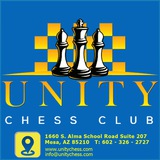In the game, Black erred with 3...Ra1?, and after 4 Rc8! (but not 4 Re8? Ra6+! =) 4...Ra6+ 5 Rc6 Rxa7 6 Rc7+ Rxc7 7 Kxc7, White controlled the distant opposition, which was then easily converted to the close opposition: 7...Kh7 8 Kd7! Kg6 9 Ke6 Kg7 10 Ke7 Kg6 11 Kf8, and Black resigned.
4 Ke6 Ra1 5 Rd8 (5 Re8 Ra6+! 6 Kf5 Rxa7 =) 5...Rxa7 6 Rd7+ Rxd7 7 Kxd7 Kh7!=. Black is saved only by the distant opposition - and not by the close opposition: 7...Kf7? 8 Kd6 is zugzwang, and it is White who takes the opposition.
The Black rook stands behind the passed h-pawn; but since White’s king has already arrived to blockade it, the pawn can only be employed as a distracting force. Black must initiate active operations on the opposite wing.
31...Ke6?! is useless after 32 Re1+ (Black cannot allow the White rook to reach the 7th). And after 31...Rh7?! 32 Kh3, it’s not easy to make further progress.
31...Ke6?! is useless after 32 Re1+ (Black cannot allow the White rook to reach the 7th). And after 31...Rh7?! 32 Kh3, it’s not easy to make further progress.
The pawn ending is lost: 33 Rxc7 Kxc7 34 Kg3 Kd6 35 Kh4 Kd5 36 Kxh5 Kd4, and wins. If 33 Rf8, then 33...Rc2+.
34 a4?! (this move, weakening the queenside pawns, actually makes Black’s job easier) 34...Kd4 35 a5 Kxd3 36 Rf3+ Kc2 37 b4 b5!
38 a6 Rc4 39 Rf7 Rxb4 40 Rb7 Rg4+ 41 Kf3 b4 42Rxa7 b3 White resigned.
38 a6 Rc4 39 Rf7 Rxb4 40 Rb7 Rg4+ 41 Kf3 b4 42Rxa7 b3 White resigned.
The straightforward king march to the kingside pawns comes too late: 1 Kc5? h5! 2 Kd4 (intending 3 Kd3) 2...Kb1 3 Rg1+ c1Q 4 Rxc1+ Kxc1 5 Ke3 (with the king on d5 or d6, White could go after the g7-pawn; but from d4, the road is much too long) 5...Kc2 6 Kf4 Kd3 7 Kg5 Ke4, and wins; 1 Kc6? h5! 2 Kd6 h4! 3 Ke6 h3 (Black has won a vital tempo) 4 Rh2 Kb1 5 Rh1+ c1Q 6 Rxc1+ Kxc1 7 Kf7 h2 8 Kxg7 h1Q, and wins.
The “strategic double attack!” This move not only brings the king closer to the g7-pawn (as may be seen in the variant 1...Kb1 2 Rg1+ c1Q+ 3 Rxc1+ Kxc1 4 Kd7 h5 5 Ke7 h4 6 Kf7 h3 7 Kxg7 h2 8 f6 h1Q 9 f7 =), but at the same time prepares a completely different idea.
1...h5! 2 Kb8!! Kb1 (the same reply comes after 2...h4) 3 Rxg7! c1Q 4 Rb7+ =.
